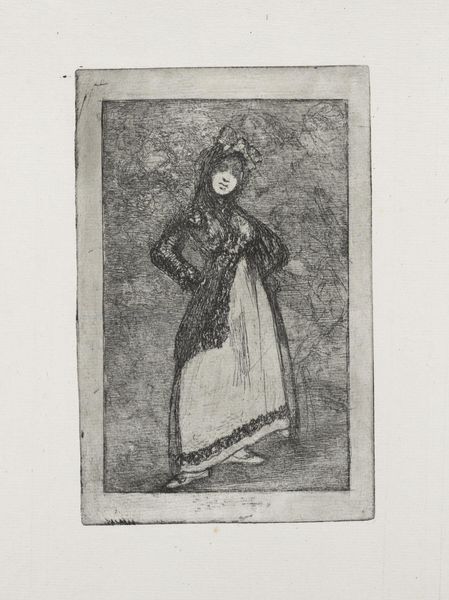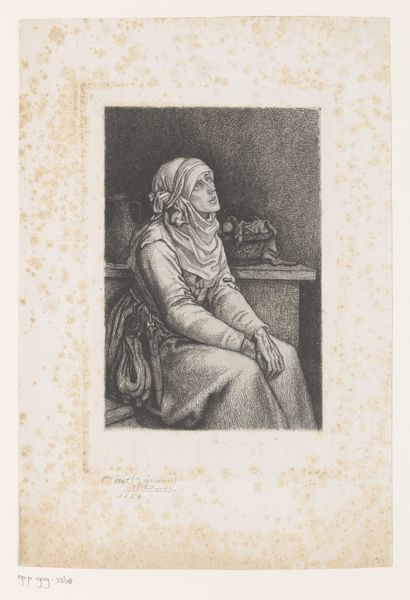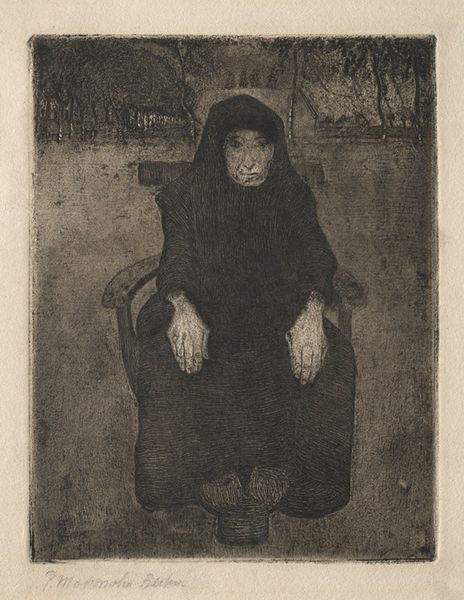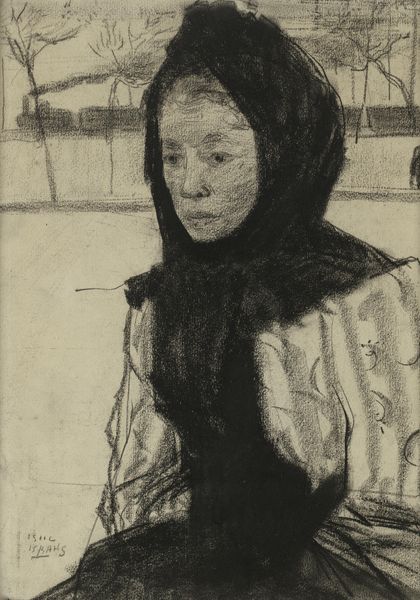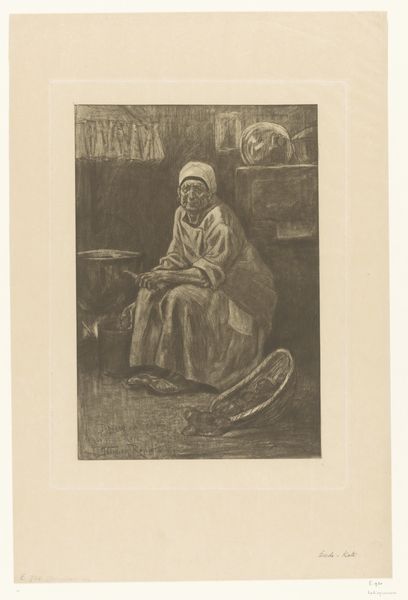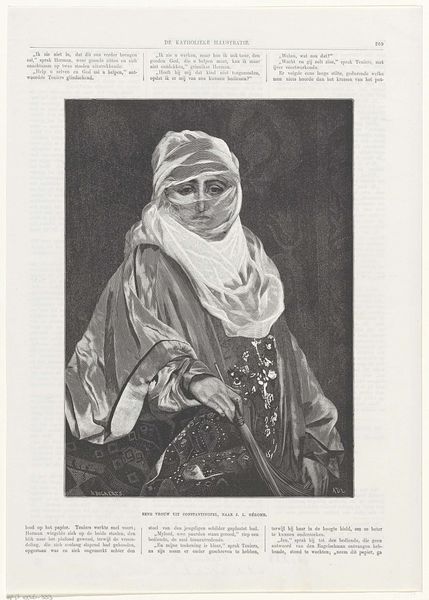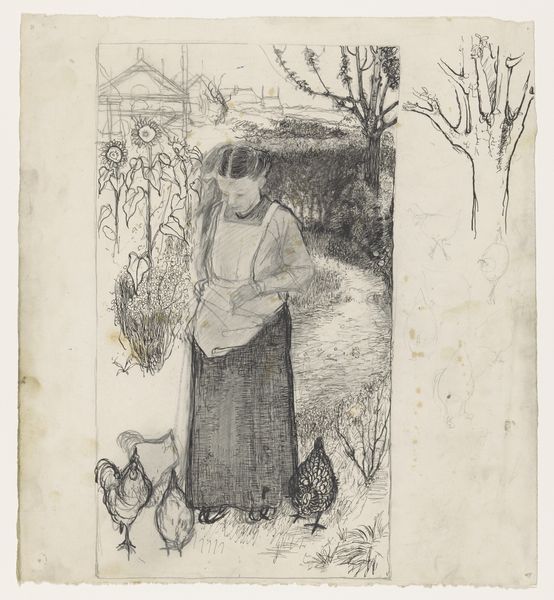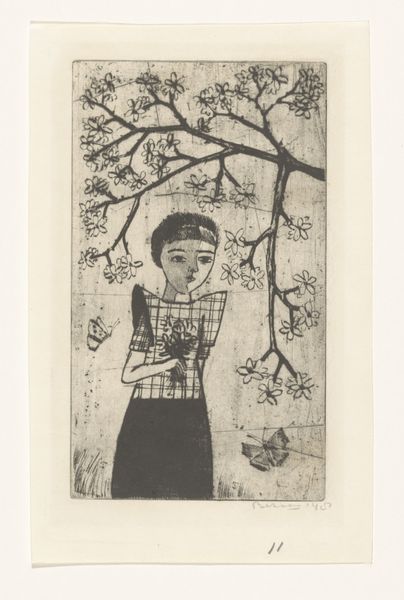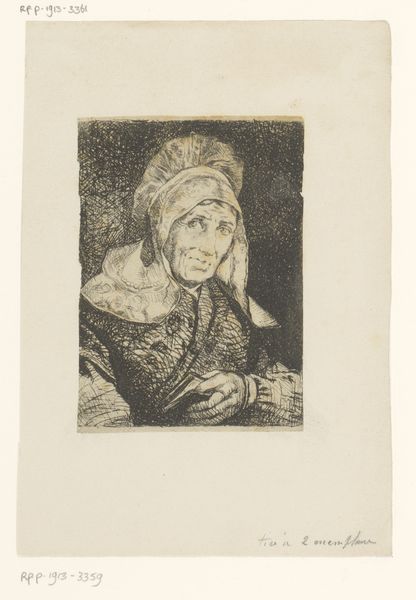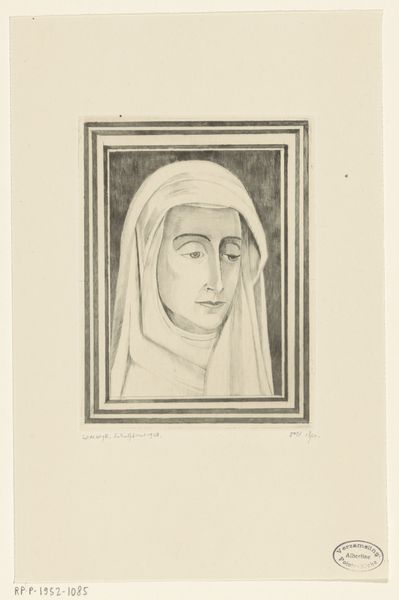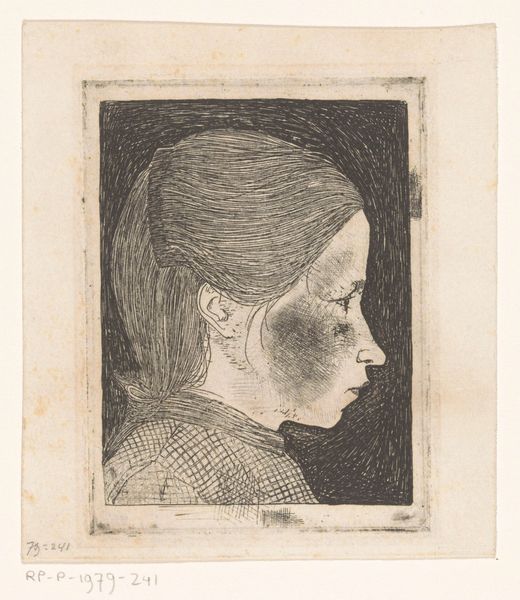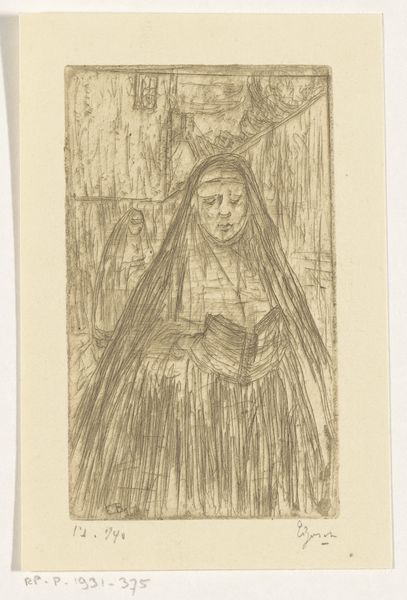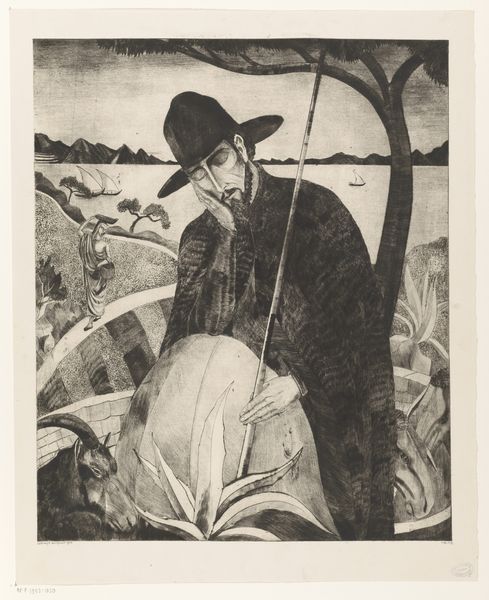
drawing, graphite
#
portrait
#
drawing
#
landscape
#
caricature
#
graphite
#
genre-painting
#
modernism
#
realism
Dimensions: height 595 mm, width 490 mm
Copyright: Rijks Museum: Open Domain
Curator: A striking work! “Vlaamse boerin in een heuvellandschap,” Flemish Peasant Woman in a Hilly Landscape, made in 1926 by Lodewijk Schelfhout. It's a graphite drawing held here at the Rijksmuseum. What’s your initial reaction? Editor: Somber. And stark. There’s a weighty stillness. Her downward gaze and the muted tones really emphasize hardship, maybe even resignation. It almost feels like a visual poem of rural life. Curator: I see that. Schelfhout certainly encapsulates the prevailing Realist sentiments towards genre paintings but then adds this slight degree of stylization to push the work further into early modernism. Look how deliberately her face is constructed through these large sweeping lines of graphite, which adds to this effect. What do you think that signifies? Editor: To me, the stark, almost caricature-like simplicity draws out something universally sorrowful. She represents not just one woman, but the burden carried by many in this particular time period between world wars. This artwork gives us not just an image but almost a feeling of lived rural history in Europe. How this connects to symbolism with genre paintings of the 19th century, as it carries these thematic traditions over, but is it a conscious shift to that symbolic load? Curator: Absolutely. It resonates with archetypes of women rooted in nature and labor. Even her headscarf, which functions literally but also recalls many traditional female head coverings that act as these visual shortcuts that call for memory through recognition. He understood that these images had this weight; that art exists within that larger visual culture, he can engage that. But notice how modernism simplifies to elevate, removing excess detail to intensify these archetypes. And this can serve for a long term impact too because future audiences may pick up on different sets of connotations or social impacts of this imagery in a new time. Editor: And I appreciate how grounded this all is in material reality: The grain in the drawing, how it makes use of visible line-work in modern ways... and all this gives it such a sense of immediacy in our eyes even now, almost a hundred years later. Curator: It truly is a compelling piece. It exemplifies the power of simplicity in image and also reminds us that, ultimately, we continue to look at images in consideration of larger memory that informs our present. Editor: Precisely, how one artwork is this conversation across many past and futures, and across the minds of those who make and interpret it!
Comments
No comments
Be the first to comment and join the conversation on the ultimate creative platform.
